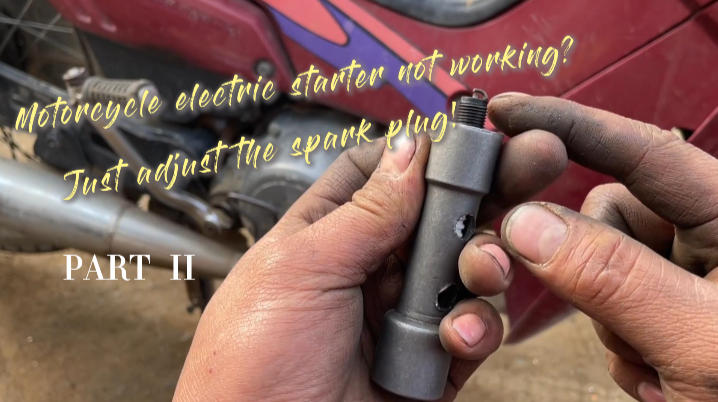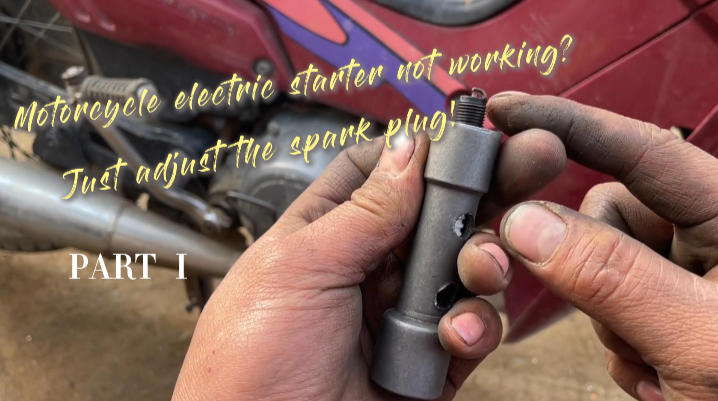Where is the starter motor in a car
-
10
-
2025-10-28 16:00:58
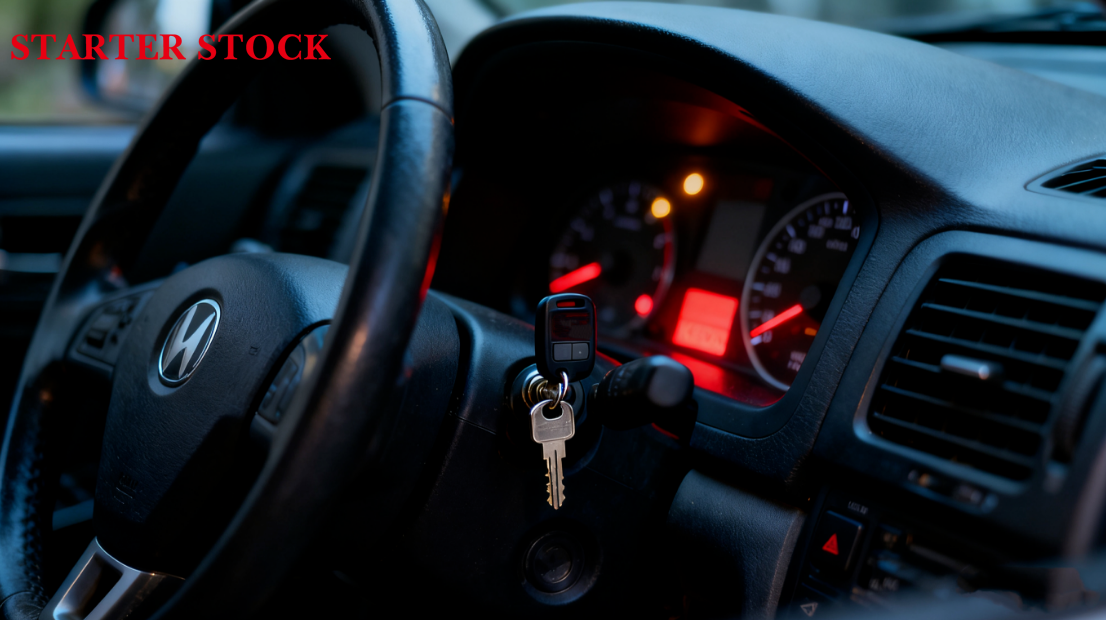
You jam the key (or press the button), you expect the engine to cough to life, and instead you get a single, sad click. Now you need to find the starter motor. But where is it? Short version: usually right where the engine meets the transmission. Long version: automotive designers love bad hiding spots and odd angles, and the starter can be tucked under hoses, behind heat shields, or buried under bits that look intentionally placed to ruin your afternoon.
This article is for people who want to find the starter without fake-sounding instructions or robotic flourish. Real talk, no fluff. I’ll show you where it usually lives, how to spot it fast, what the differences look like across drivetrains, and a few practical tricks so you don’t pull the wrong part or hurt yourself. Read it while you sip your coffee — or open it on your phone in the driveway like most people do.
Quick answer (for scanners)
Follow the fat positive battery cable. Where it goes — or where it branches to — is the starter. Look near the bellhousing (that’s the mating surface between the engine and transmission). The starter is a short, chunky cylinder with a smaller solenoid attached and a fat lug where the battery cable bolts on. If it’s got a pulley and a belt, that’s the alternator — not the starter. Easy to mix those up if you’re new. Don’t be that person.
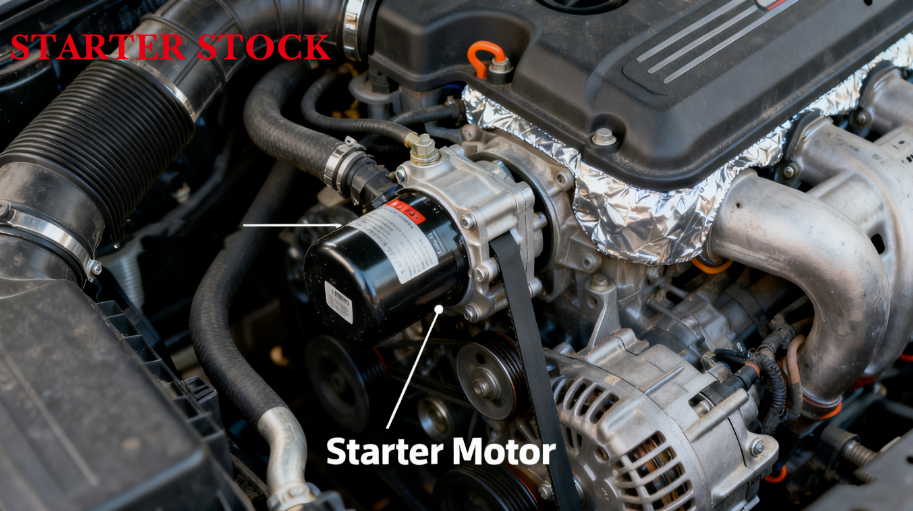
What the starter looks like (so you don’t confuse it)
Starter: thick cylinder, often with a little cylinder bolted to the side (solenoid). One big terminal for battery + cable. One or two small wires for the trigger/ignition. Bolted to the bellhousing with two or three bolts. It’s metal, heavy-ish, and usually a little grimy unless the car’s brand new.Alternator: big, has fins, a pulley and a belt. Spins while the engine runs. Makes electricity. Different job. Different look. If it has a belt on it, it’s the alternator. Move along.
Where to look by drivetrain and engine layout
Car designs vary. Here’s the cheat sheet:front-wheel-drive (transverse engines — most small/mid cars)
● Starter is usually low and toward the rear of the engine bay, near the firewall or beside the transaxle.
● On many transverse V6s it’s tucked under intake plumbing or behind heat shields. Expect tight spaces.
● You may have to look from under the car to see it clearly.
rear-wheel-drive (longitudinal engines — older sedans, trucks)
● Starter tends to be near the back or side of the engine where it meets the transmission.
● Easier access on many old-school cars and trucks. Often reachable from below with a creeper or from the side.
all-wheel-drive / 4x4
● Locations vary wildly. Could be near the transfer case, under crossmembers, or tucked in odd places.
● Accessibility ranges from “no problem” to “call a shop and cry.”
inline-4 vs v6 vs v8
● Inline-4 (transverse): usually low & tucked by the transaxle.
● V6 (transverse): often under an intake; annoying to access.
● V8 (longitudinal): often at the bellhousing and a little easier to spot — but sometimes surrounded by accessories.
hybrid / start-stop cars
● Modern hybrids and start-stop systems sometimes use starter-generators or integrated motors. They don’t look like the old-school cylindrical starter; they can be near the alternator or built into the transmission. If your car is hybrid, check the manual — the “starter” might be part of a different system.
The fastest way to find it (the practical breadcrumb)
1. Pop the hood. Find the battery.
2. Identify the big positive cable. Follow it.
3. If the cable goes straight to a metal cylinder bolted to the bellhousing — bingo. That’s your starter.
4. If the cable goes to a distribution block and then a branch heads to the transmission, follow the branch.
Following the fat cable saves you from random guessing and from mistaking the alternator for the starter.
Common hiding tricks (aka things that make you curse)
● Heat shields and plastic covers. Real engineers sometime enjoy armor plating the starter.
● Intake plumbing. On transverse V6s the intake sits on top like a fortress.
● Engine mounts. You might need to loosen or support the engine for full access on some swaps (not a fun DIY unless you have a lift).
● Crossmembers/subframes. Some cars need the subframe dropped or supported to get the starter out. Shop job territory.
If the starter is under the intake or you need to remove engine supports, lean toward paying a mechanic unless you have tools and patience.
Tools and safety (don’t be reckless)
● Disconnect the negative battery terminal before you touch anything. Yes, really. That fat cable carries firepower.
● Bring: ratchet, sockets (commonly 10–17mm), extensions, penetrating oil, flashlight, a mirror or phone camera, jack stands if you need to go under the car.
● If you’re crawling under, use jack stands. DO NOT rely on the jack alone. You don’t want the car dropping on you — that’s not a story you’ll enjoy telling.
● Take photos before unplugging connectors. Those little tabs are easy to forget.
How to confirm you found the starter (so you don’t buy the wrong part)
● It has a big battery cable attached to a heavy post.
● It has a small trigger wire from the ignition or relay.
● It’s bolted to the bellhousing or transmission case.
● It’s a cylindrical motor, not a pulley-equipped device.
● When you tap it gently (diagnostic tap) while someone cranks the engine, sometimes it wakes up and cranks. If it does, you found the right thing — and it’s dying.
If the part has a belt wrapped around it, that’s the alternator. If it’s got cooling fins and a plug with many pins, that could be a starter-generator or something else — check the manual.
Basic diagnostic tips before removing anything
● Confirm battery voltage is good (~12.6V at rest). A weak battery makes everything lie to you.
● Clean the battery terminals and starter connections. Corrosion is a massive starter killer — and also the cheapest fix.
● Listen: single loud click = solenoid engaging but motor not spinning; rapid click = low voltage; complete silence = no power reaching the starter or dead starter.
● Tap test: gentle tap on the housing while someone turns the key — temporary but diagnostic.
● Use a multimeter to check that the big terminal has battery voltage and the small trigger wire gets voltage when you crank. If power reaches the starter’s big post but it won’t spin, the starter is probably bad.
Do this before ordering parts — it saves time and money.
Is it worth pulling the starter yourself?
Yes and no.Yes if:
● The starter is easy to access (older RWD vehicles, trucks).
● You have basic tools and a safe place to lift the car.
● You like saving money and can handle a socket set.
No if:
● The starter is under intake manifolds, or the job requires supporting the engine or dropping a subframe.
● You don’t have a safe way to work under the car.
● You don’t have experience with wiring or connectors — those small mistakes can cause big headaches.
If it’s easy to reach, replacing a starter is a classic DIY win. If it’s buried, consider the shop.
When it’s not the starter (so you don’t waste cash)
● Dim dash and rapid clicking = probably battery or bad connection.
● Slow cranking = often battery issue or heavy mechanical load. Test the battery first.
● Intermittent starting = could be starter, ignition switch, neutral safety switch, or a flaky relay.
● Strange electrical gremlins = check fuses and relays before pulling the starter.
Diagnosis first, parts second. Ask the shop to show you the test results if you pay them — don’t accept “it’s the starter” without a demonstration.
Cost & time reality check
● If the starter is accessible, swap time might be 1–2 hours.
● If buried under intake or subframe, 3–6 hours or more. Labor costs add up.
● Parts: expect $80–$400 depending on new vs reman vs OEM and your car.
● Total: typical bill is $200–$800; some cars with awful access push that number higher.
If you DIY, you save the labor but still need the right part and the confidence to do the job.
Final notes: the starter’s little life story
Starters are simple but critical. They live where the engine and transmission meet because that’s the only place the starter gear can mesh with the flywheel. The variability in location mostly comes from packaging: where all the other engine bits had to go. Sometimes that packaging is sensible. Sometimes it feels personal.
-
Oil Pump JR-B18-1 16700-K20-903 For Z00MER

-
Oil Pump JR-B18 16700-KVG-41 For AIR BLADE
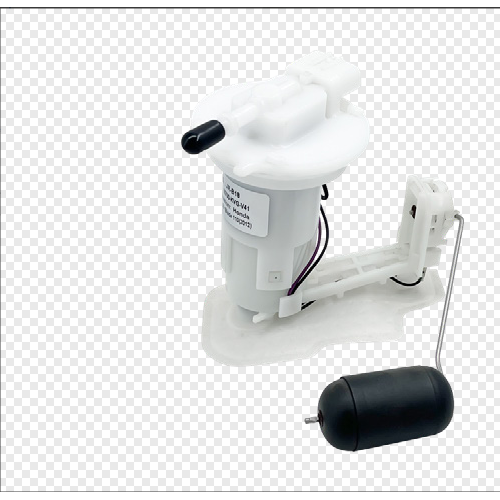
-
Oil Pump JR-B113 16700-HR3-A21 For Fou rTrax Rancher
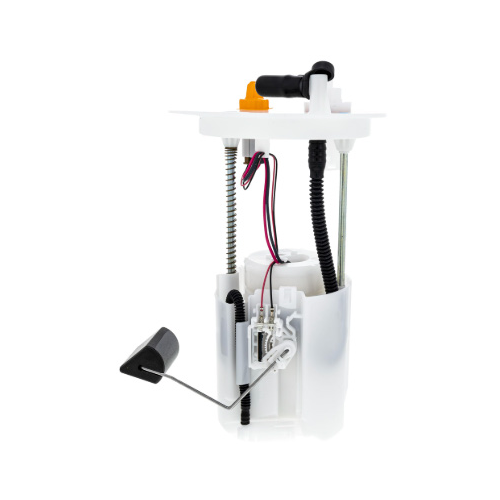
-
Oil Pump JR-B112-1 275500734 For GT1 130/155 2011-2012
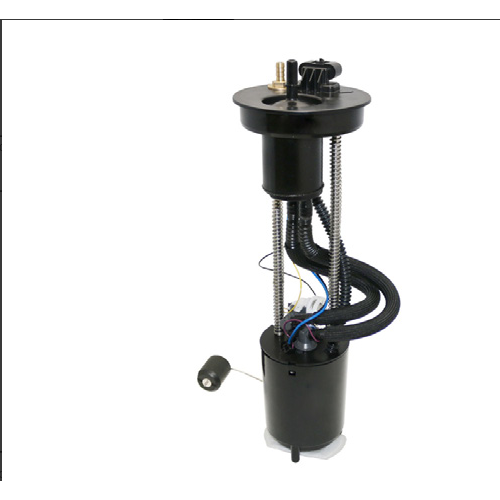
-
Oil Pump JR-B112 47-1027 For MAVERICKX
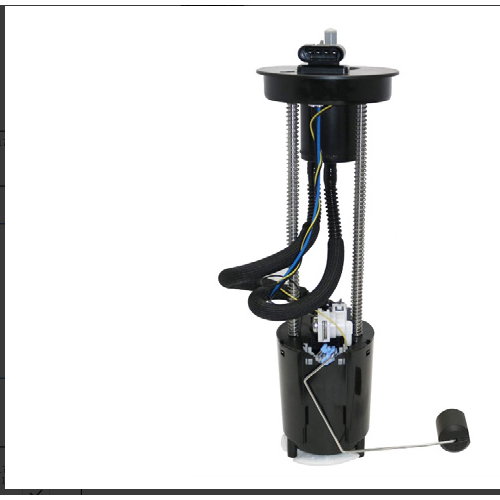
-
Oil Pump JR-B110 47-1050 For OUTLANDER
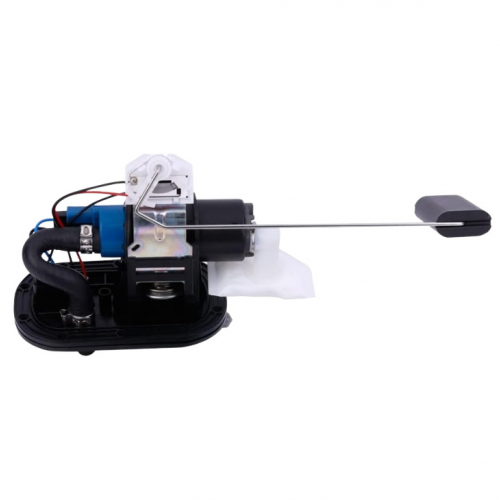
-
Oil Pump JR-B109 709000758 For OUTLANDER
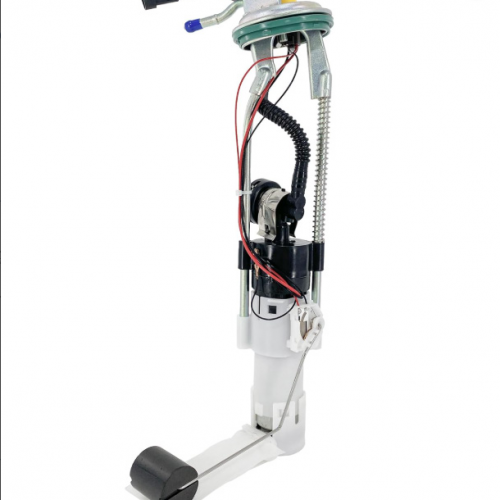
-
Oil Pump JR-B108-1 2204308 For SPORTSMAN
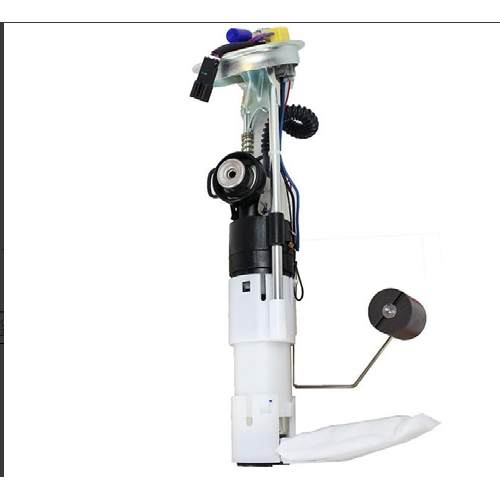
-
Oil Pump JR-B108 47-1014 For SPORTSMAN
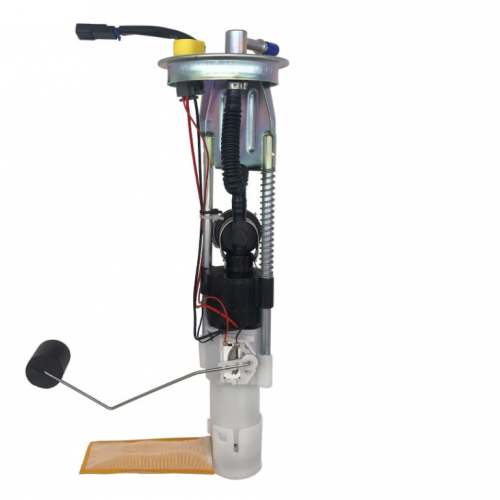
-
Oil Pump JR-B98-1 47-1012 For RANGER



